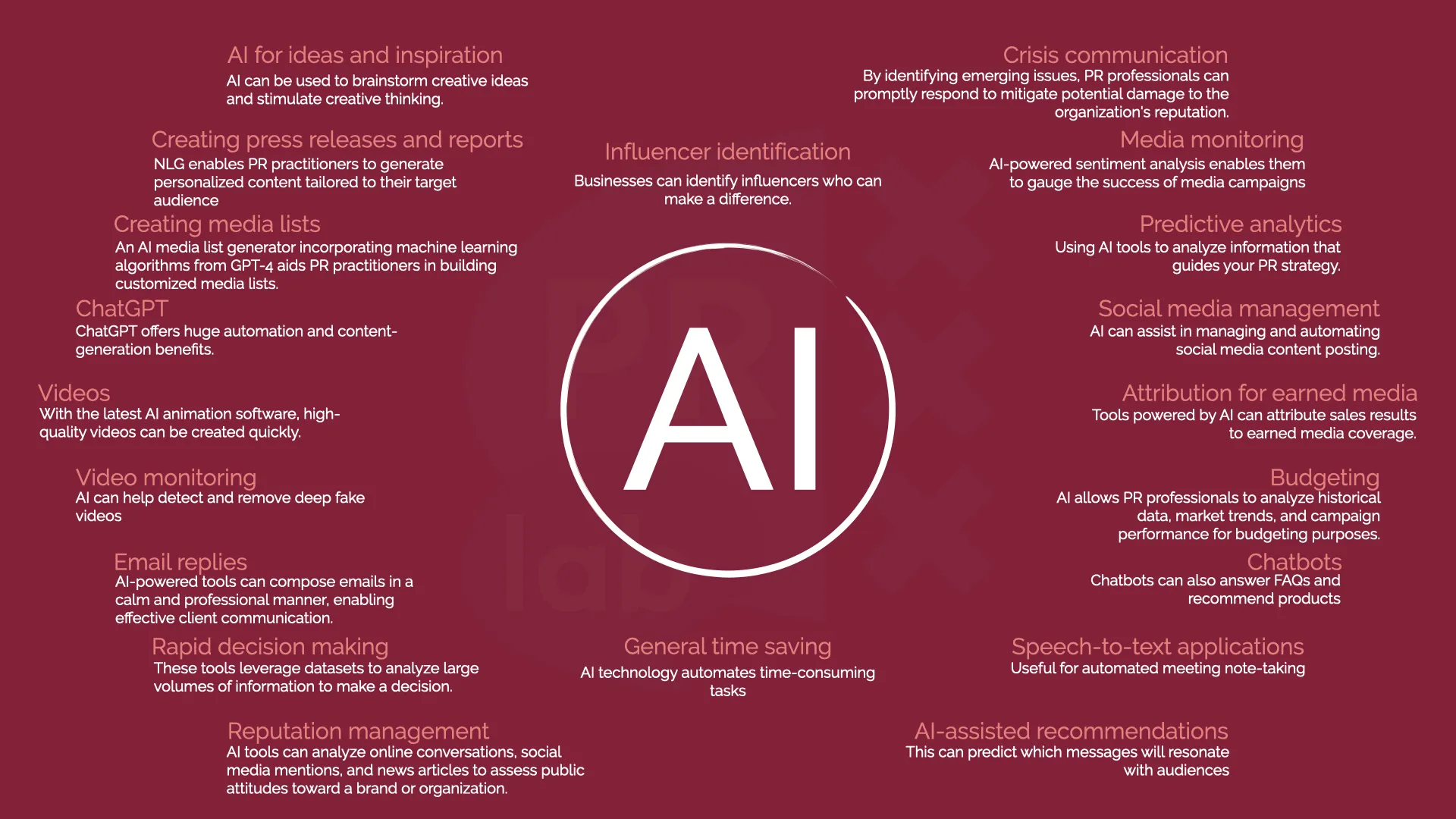The public relations industry stands at a crossroads. As artificial intelligence reshapes how we create, distribute, and consume information, PR agencies must grapple with fundamental questions about their role, value proposition, and future survival. The rise of AI tools capable of generating press releases, crafting social media content, and even analyzing sentiment has left many wondering: what does the future hold for human-driven PR?
The AI Revolution in Communications
AI has already begun transforming the PR landscape in ways both subtle and profound. Automated content generation tools can produce press releases in minutes, sentiment analysis algorithms can track brand perception across thousands of platforms simultaneously, and predictive analytics can forecast which stories will gain traction before they’re even published. These capabilities represent a seismic shift from the traditionally relationship-driven, intuition-based world of public relations.
For PR agencies, this technological evolution presents both unprecedented opportunities and existential challenges. The efficiency gains are undeniable – tasks that once required hours of human labor can now be completed in minutes. Media monitoring that previously demanded armies of interns can be handled by sophisticated algorithms that never sleep, never miss a mention, and can process information in dozens of languages simultaneously.
Where Human Expertise Still Reigns
Despite AI’s impressive capabilities, the human element remains irreplaceable in several critical areas of public relations. Crisis management, perhaps more than any other PR function, demands the nuanced judgment, emotional intelligence, and strategic thinking that only experienced professionals can provide. When a company faces a reputation-threatening crisis, stakeholders don’t want algorithmic responses – they want authentic, thoughtful communication that demonstrates understanding of the human impact.
Relationship building, the cornerstone of effective PR, continues to be fundamentally human. While AI can identify key journalists and influencers, it cannot replace the trust, rapport, and mutual understanding that develop through genuine human connections. The ability to read between the lines in a conversation, to understand unspoken concerns, and to build long-term partnerships remains uniquely human.
Strategic counsel represents another domain where human expertise proves invaluable. AI can analyze data and identify patterns, but it cannot replace the strategic thinking required to navigate complex political landscapes, understand cultural nuances, or provide the kind of high-level counsel that CEOs depend on during pivotal moments.
The Transformation of Traditional PR Functions
Media relations, once the bread and butter of PR agencies, is undergoing radical transformation. AI-powered tools can identify relevant journalists, personalize pitches at scale, and track media coverage with unprecedented precision. However, this automation is raising the bar for what constitutes effective media relations. Generic pitches and mass email campaigns are becoming increasingly ineffective as journalists, overwhelmed by AI-generated outreach, become more selective about the communications they engage with.
Content creation presents a fascinating case study in AI’s impact on PR. While AI can generate press releases, blog posts, and social media content quickly and affordably, the results often lack the creativity, brand voice, and strategic messaging that distinguish exceptional PR campaigns. The challenge for agencies lies in leveraging AI’s efficiency while maintaining the quality and authenticity that clients expect.
Social media management, traditionally a labor-intensive function, is being revolutionized by AI tools that can schedule posts, respond to comments, and even create content. However, the risk of tone-deaf automated responses or the absence of genuine human engagement poses significant brand risks that agencies must carefully navigate.
Emerging Opportunities in the AI Era
Forward-thinking PR agencies are discovering that AI creates new opportunities for value creation. AI-powered analytics can provide clients with insights that were previously impossible to obtain, such as real-time sentiment analysis across global markets or predictive modeling of how specific messages will resonate with different audience segments.
The complexity of managing AI tools and interpreting their outputs creates new consulting opportunities. Many clients need guidance on which AI tools to adopt, how to integrate them into existing workflows, and how to maintain brand consistency across AI-generated content. Agencies that develop expertise in AI implementation and management can position themselves as indispensable partners in their clients’ digital transformation journeys.
Data interpretation and strategic analysis represent growing areas of opportunity. As AI generates vast amounts of data about media coverage, audience engagement, and campaign performance, agencies that can synthesize this information into actionable insights will become increasingly valuable.
The Skills Gap Challenge
The integration of AI into PR operations is creating a significant skills gap within the industry. Traditional PR professionals must now become proficient in using AI tools, understanding their capabilities and limitations, and integrating them effectively into campaign strategies. This learning curve is steep, and agencies that fail to invest in training and development risk being left behind.
The challenge extends beyond technical skills to include strategic thinking about AI’s role in communications. PR professionals need to understand when to use AI tools and when human judgment is essential, how to maintain authenticity in an increasingly automated world, and how to leverage technology to enhance rather than replace human creativity and strategic thinking.
Looking Ahead: The Future of PR Agencies
The PR agencies that will thrive in the age of AI are those that embrace technology while doubling down on uniquely human capabilities. This means becoming more strategic, more creative, and more focused on high-value activities that AI cannot replicate. Agencies must evolve from being order-takers who execute predefined tactics to becoming strategic partners who provide counsel, creativity, and crisis management.
The future likely holds a hybrid model where AI handles routine tasks and data analysis while humans focus on strategy, relationship building, and creative problem-solving. Agencies that successfully navigate this transition will emerge stronger, more efficient, and better positioned to deliver exceptional value to their clients.
Success in this new landscape requires a fundamental shift in how PR agencies define their value proposition. Rather than competing on volume or efficiency – areas where AI excels – agencies must differentiate themselves through strategic thinking, creative excellence, and the irreplaceable human touch that builds trust, manages crises, and creates meaningful connections between brands and their audiences.
The age of AI in PR is not about replacement but transformation. Agencies that embrace this reality and adapt accordingly will find themselves at the forefront of a more strategic, more impactful, and ultimately more valuable public relations industry.



1 thought on “PR Agencies in the Age of AI: Navigating the New Landscape of Public Relations”